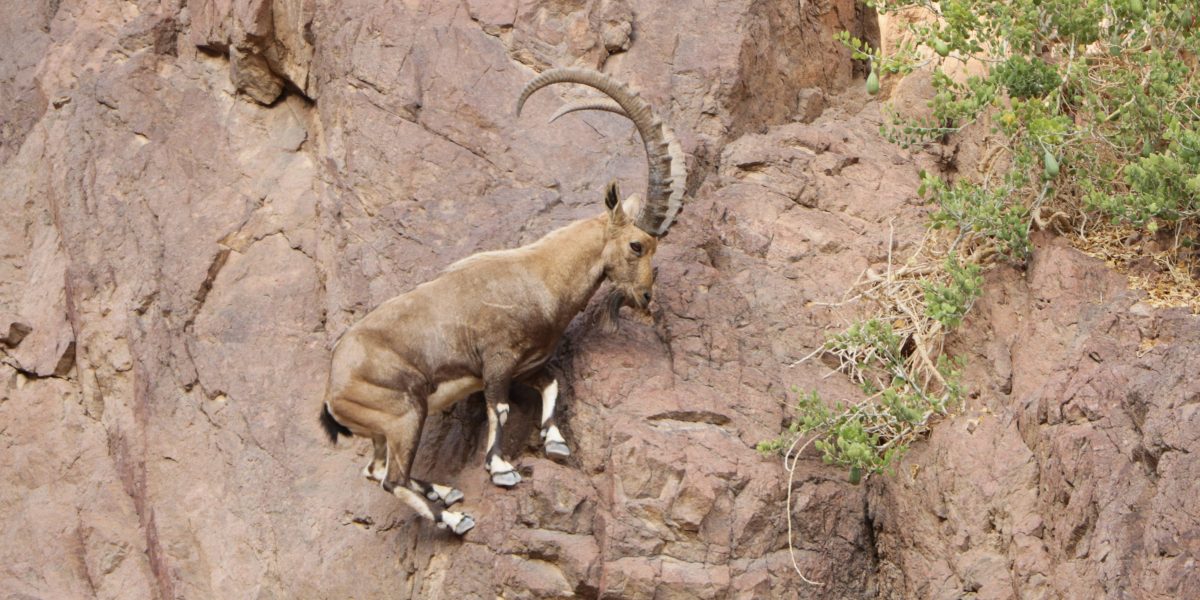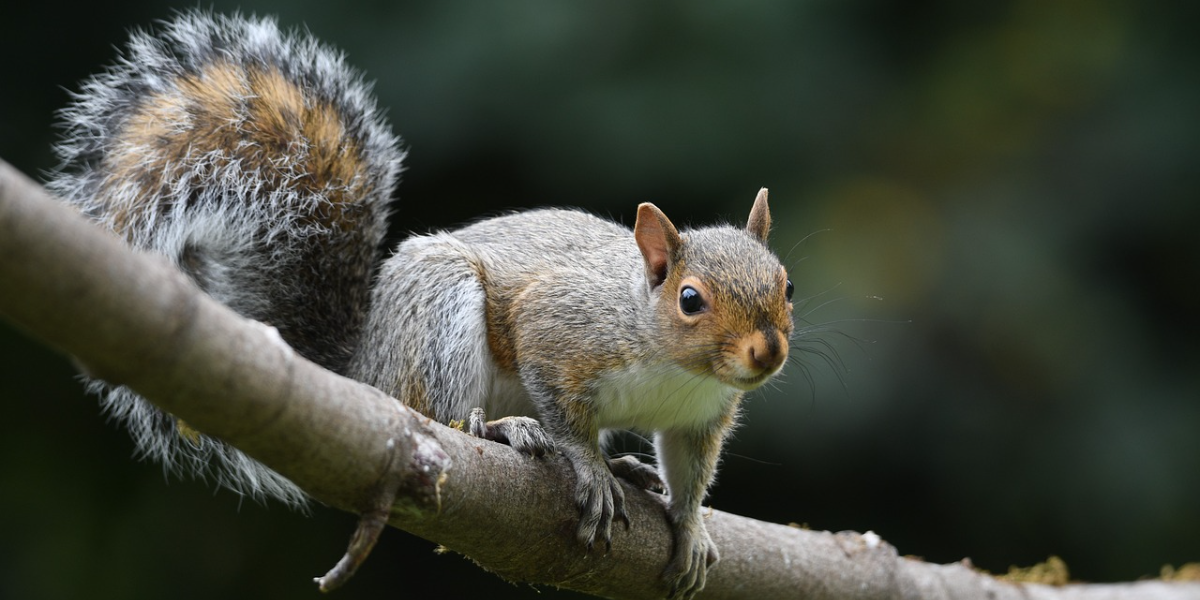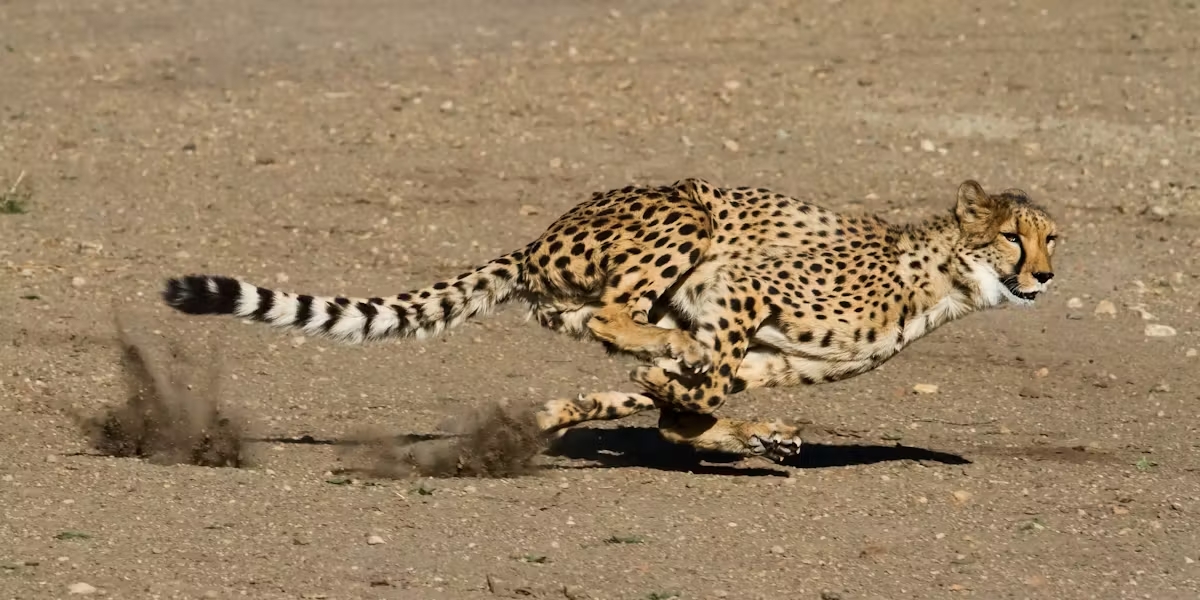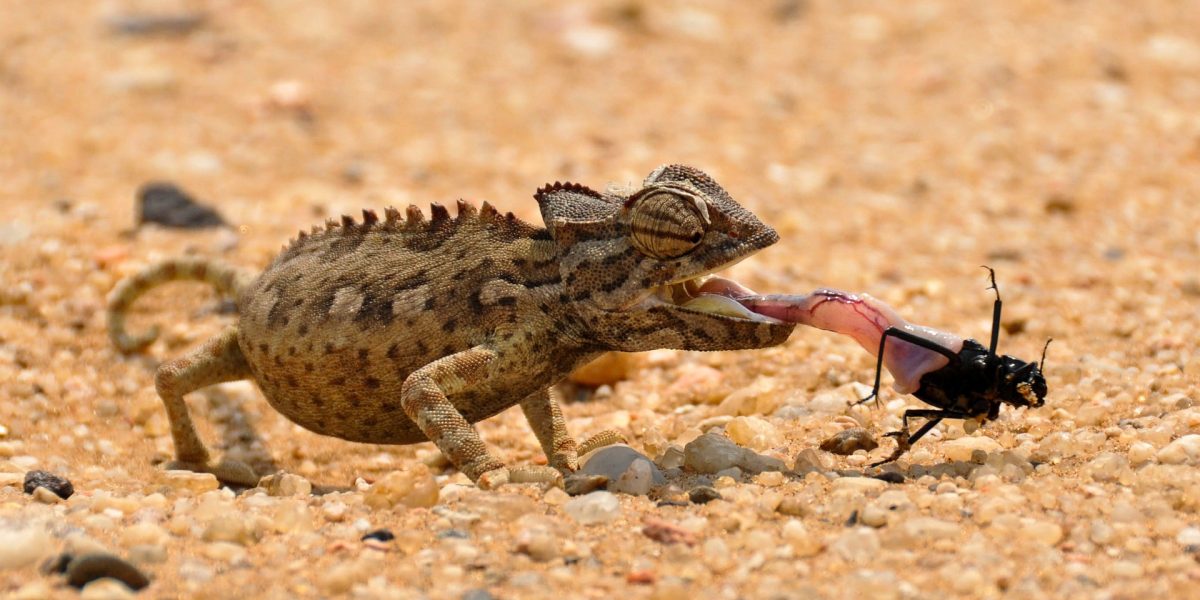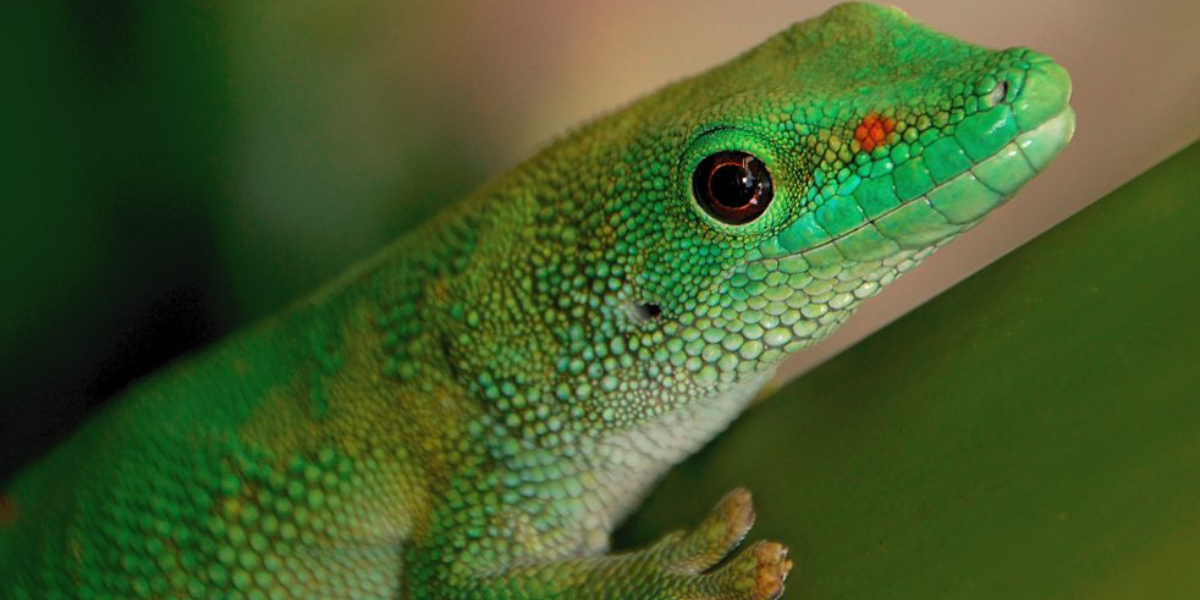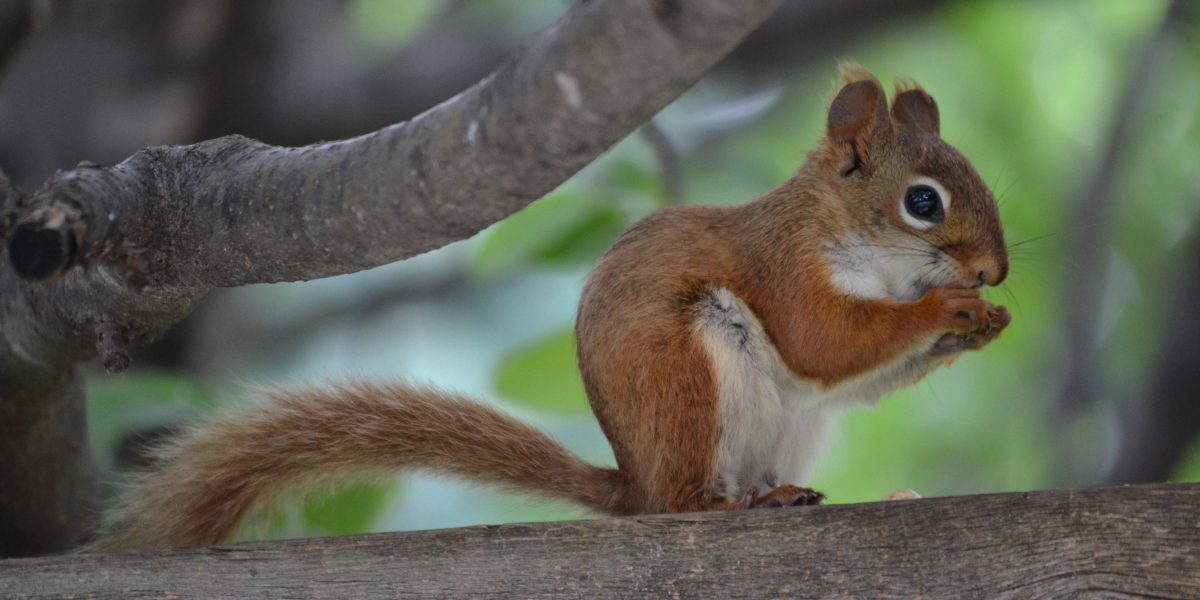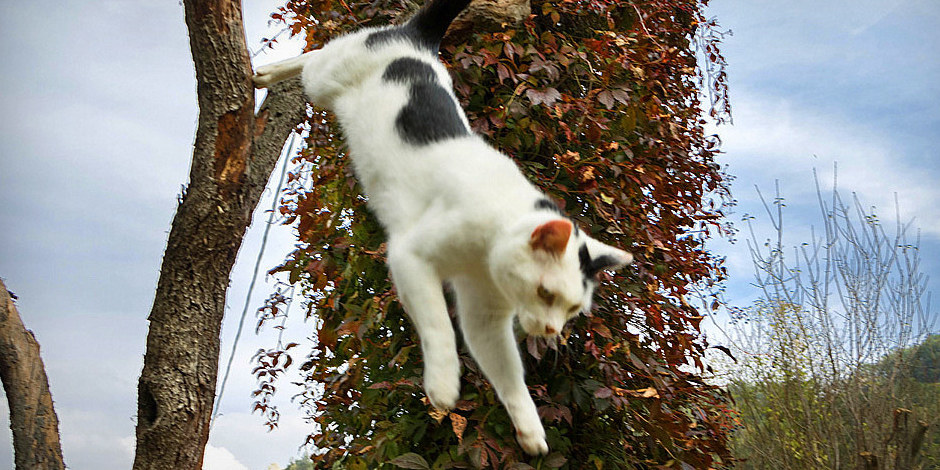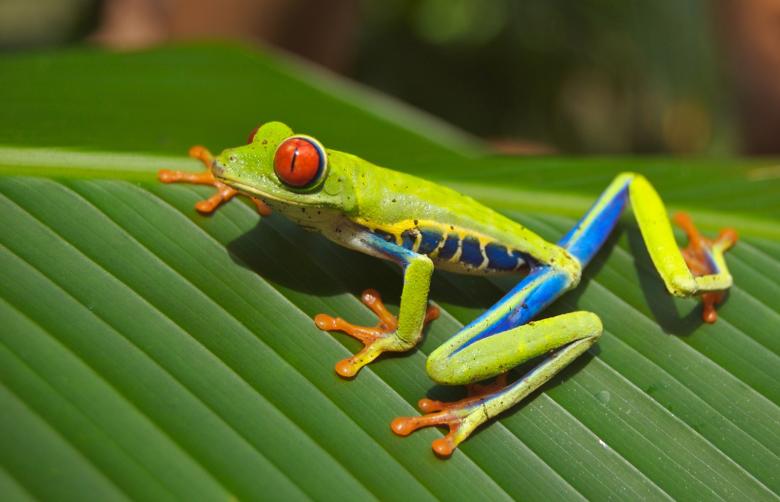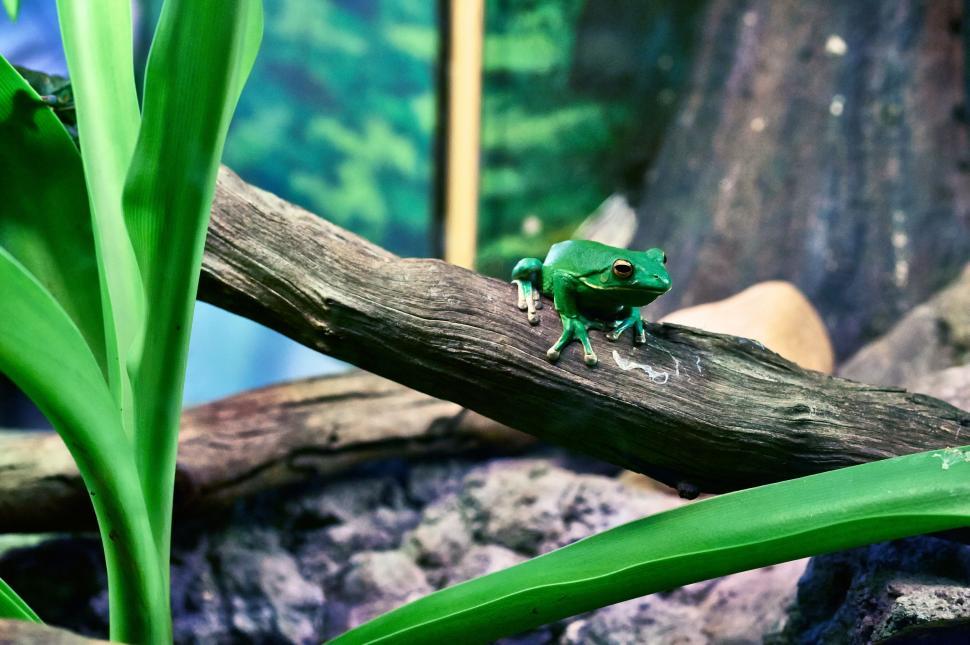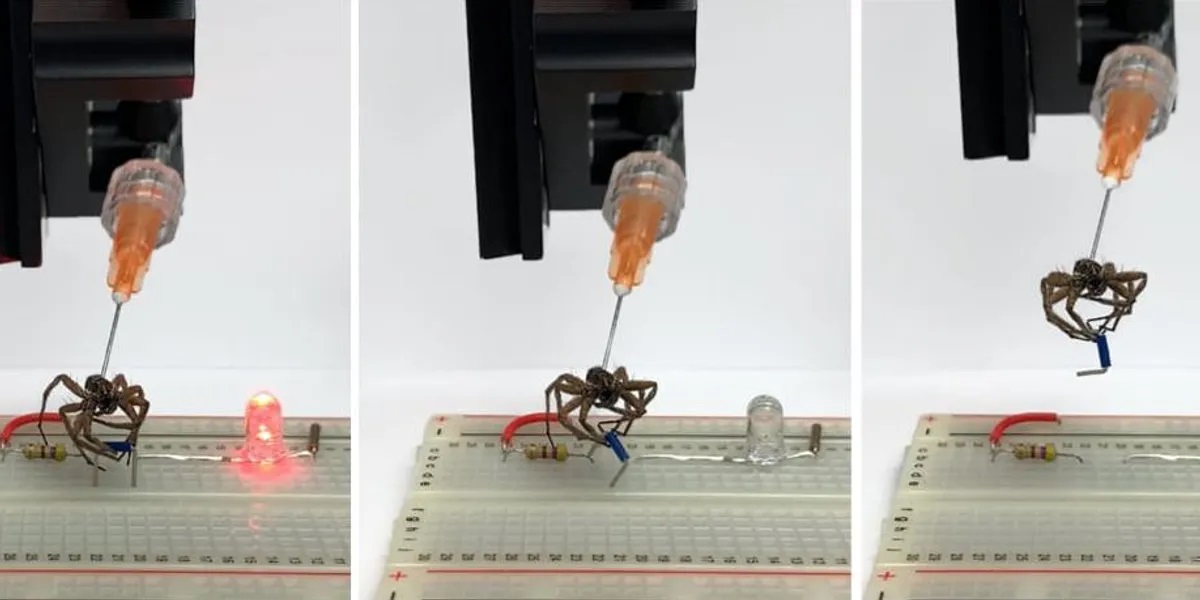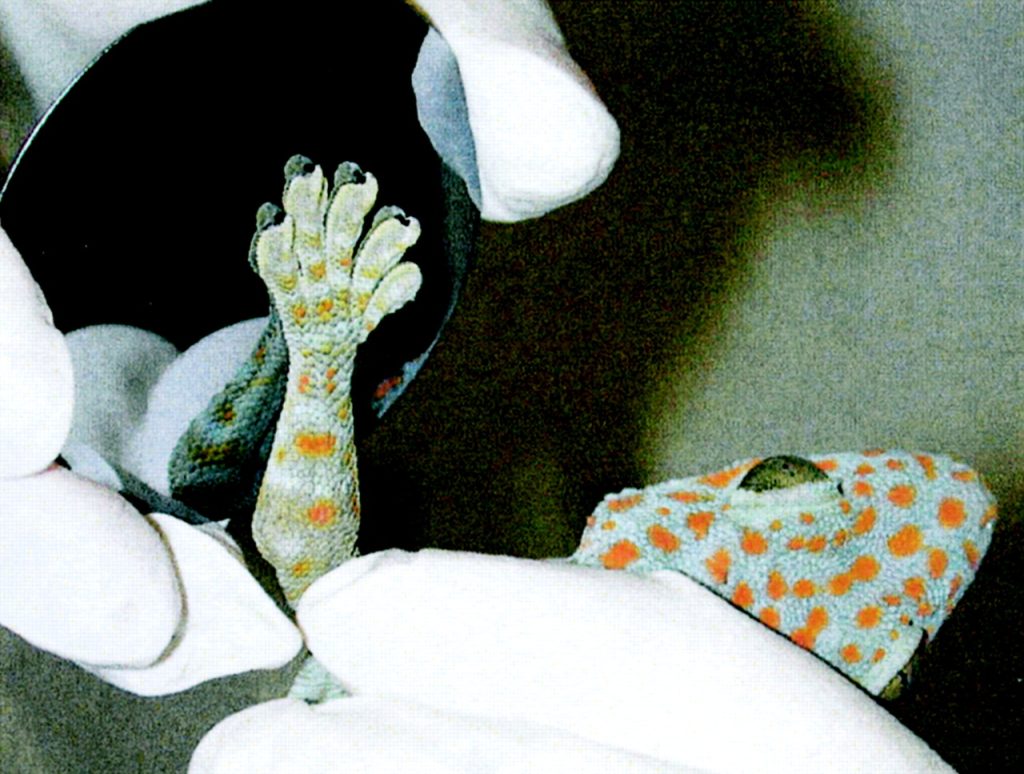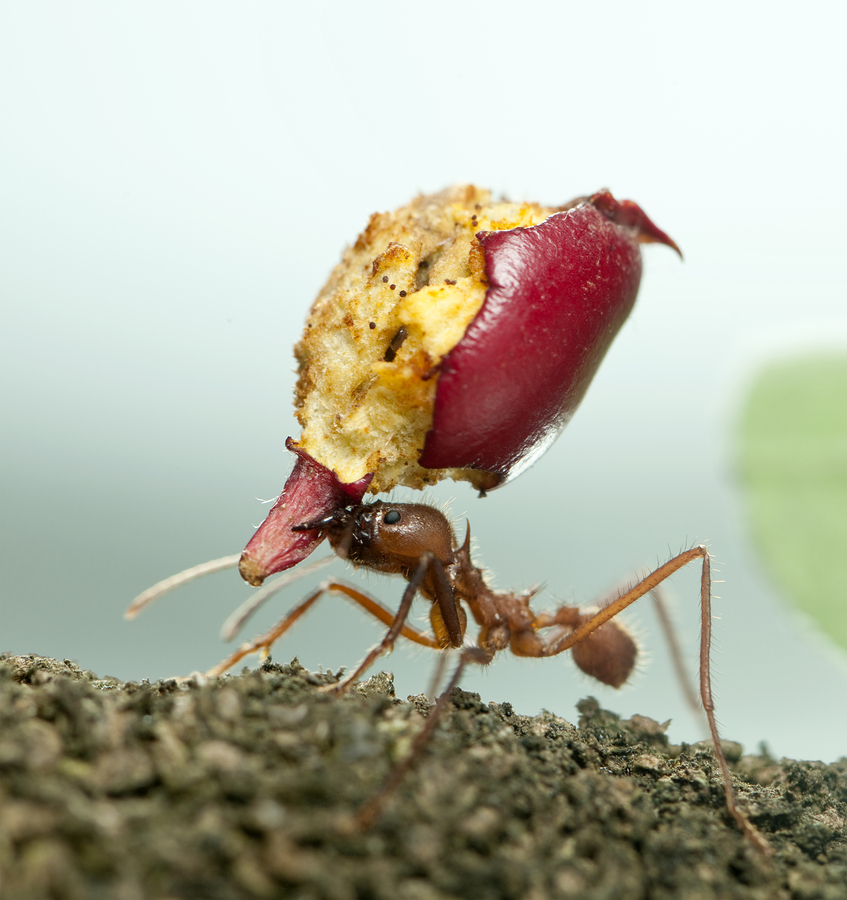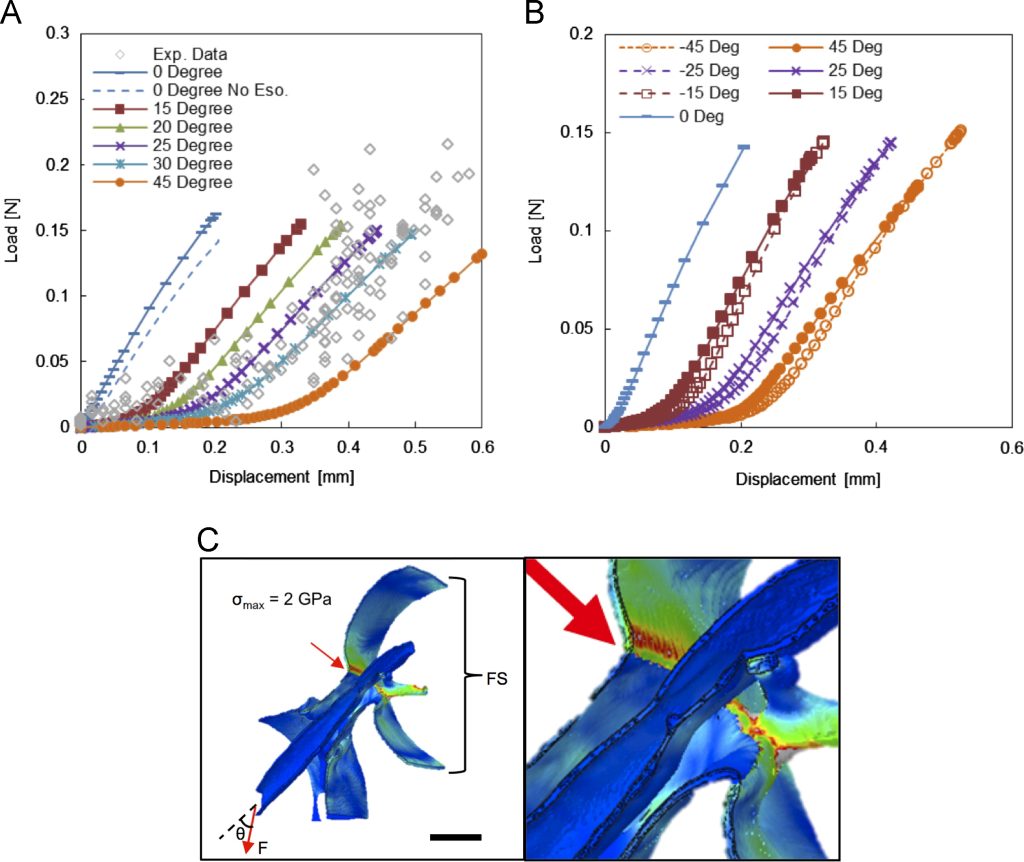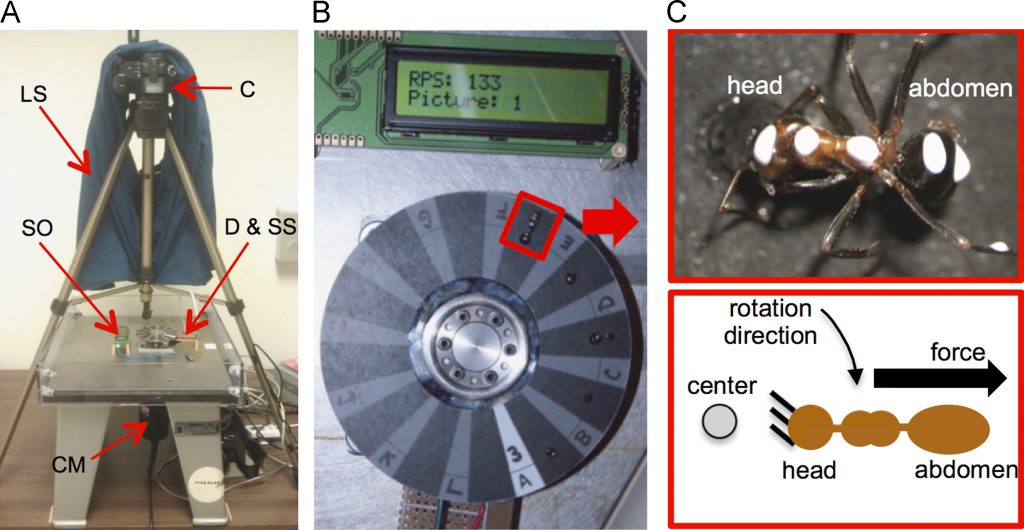In the world of engineering, the optimization of prosthetics and robotics is at the forefront of research. However, many designs are faced with the same problem – poor stability, especially when it comes to rough or sloped surfaces. This prevents amputees from being able to enjoy outdoor activities such as hiking and rock climbing, and traversing robots from being able to perform complex search and rescue. So, researchers have gotten creative and have decided to look into nature. Naturally, mountain goats became a prime source of inspiration due to their ability to seemingly defy gravity when scaling mountain tops. How do they do this? To answer this question, plenty of research has been conducted to look into things like goat anatomy, joint angles, centers of mass, ground reaction forces, and more.
Continue reading “How Goats Defy Gravity and How it Has Inspired Engineers”Tag: land animals
Springing Squirrels: The Mechanics of Squirrel Leaping and Landing
How do squirrels escape dogs, scavenge for food, and climb their way around trees? The answer is simple: squirrel parkour. With precise calculations and the physical ability to maneuver and adjust, squirrels can effortlessly leap from tree branch to tree branch without falling.
A study done by Nathaniel Hunt et al. tested squirrels on different activities where gap distance, flexibility of the launching bar, and gap height were varied. The squirrels were observed, and results showed a consistent trade-off scenario between branch flexibility and leap distance. When on high-flexibility branches, squirrels jumped closer to the branch connection point. This led to large gap lengths, up to three times the squirrel’s body length. The opposite was true for low-flexibility branches. Squirrels are able to determine branch flexibility and what launch point is necessary for them to safely make leaps to neighboring branches.
In terms of safety, throughout the course of the experiments, the researchers observed that not a single squirrel fell. They were able to successfully adjust to varying branch flexibility, height, and leap distance. The squirrels were able to accomplish this feature by performing a “parkour” move. The squirrels jumped off the branch toward a nearby wall and sprang off of it before landing. The squirrels utilized this parkour move to adjust their landing speeds. Not only does this demonstrate the adaptability of squirrels, but also their ability to adjust their bodies while jumping.
An important concept to consider when looking at mechanics of squirrels jumping is the force and speed at which they take off. Grégoire Boulinguez-Ambroise et al. completed a study to examine the effects of different branch sizes on squirrel take-off velocity and the displacement of their center of mass. Results showed that there was a difference between squirrels jumping upwards off of a flat plate, and off of a branchlike object. When jumping off the branchlike poles, squirrels prioritized shifting their center of mass to jump, whereas on the flat plates, priority was given to the produced force. These results imply that while on branches, squirrels try to maximize balance before jumping. This intuitively makes sense as you would want to be as balanced as you could before making a leap!
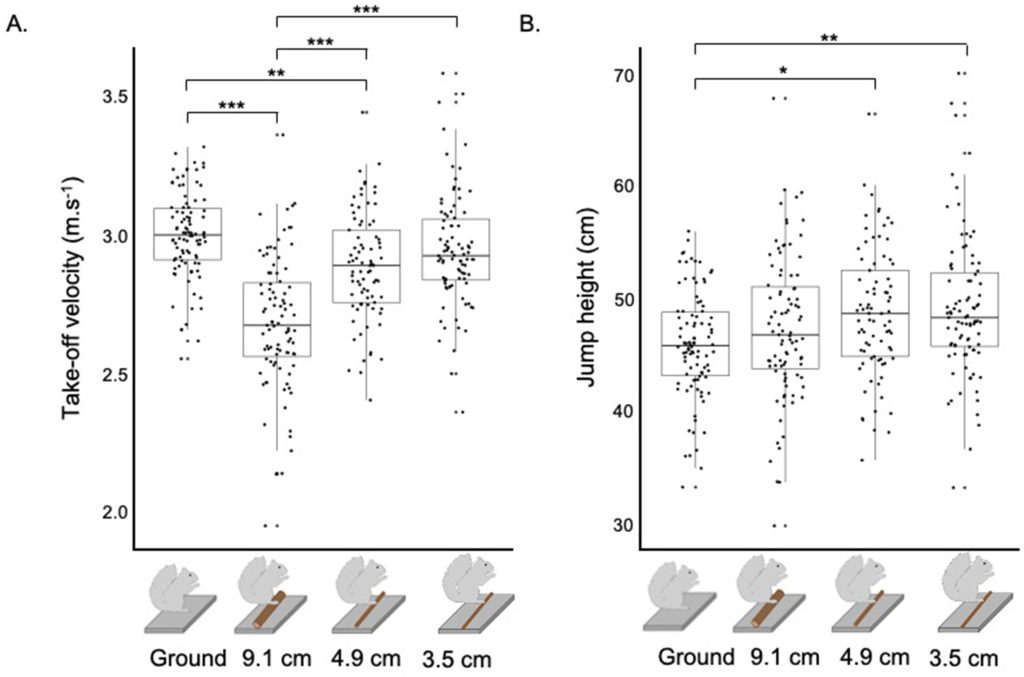
Interesting results, shown in Figure 1, showed that squirrels jumped the highest while jumping from the smaller diameter branch, and jumped the lowest when jumping from flat ground. Putting this together with the previously mentioned idea of squirrels shifting their center of mass, squirrels are able to adjust their approach to jumping depending on branch sizes.
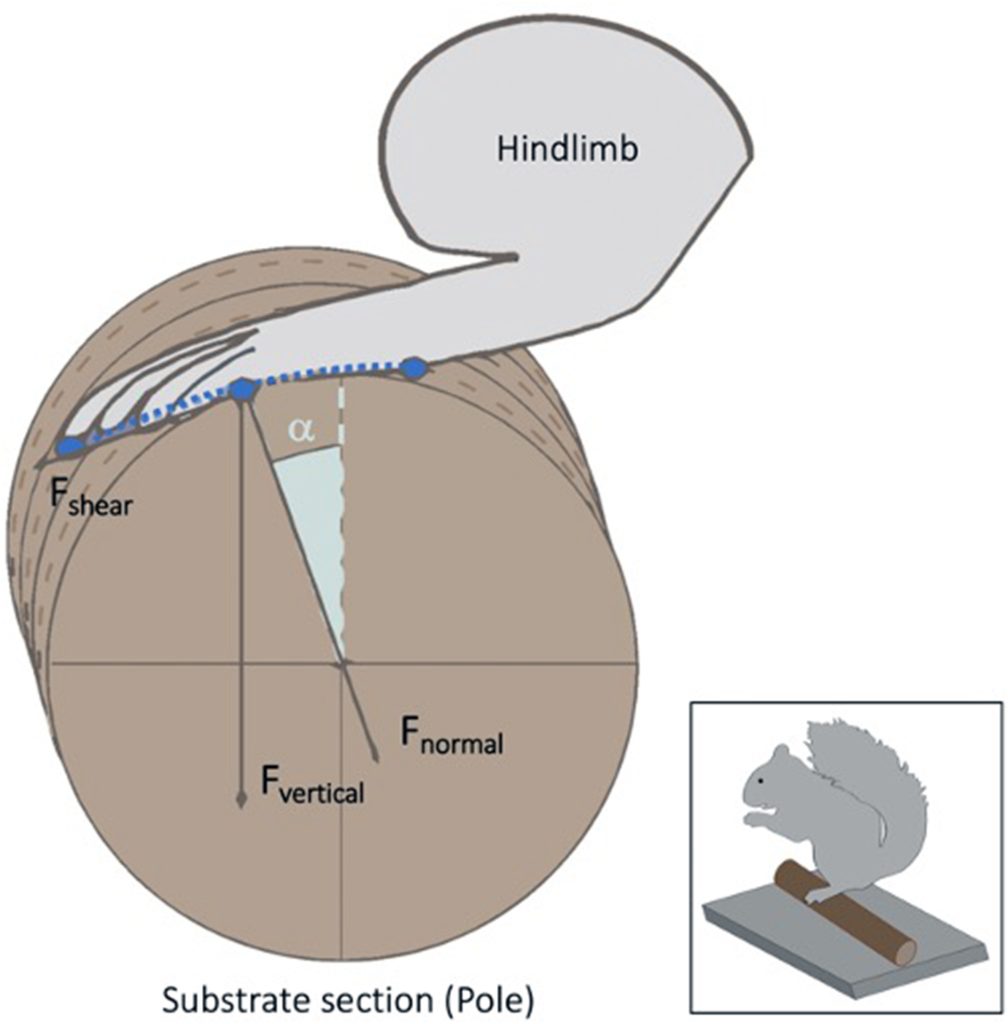
Based on the size of the branch, squirrels have to adjust their feet position. For smaller branches, squirrels must place the middle of their feet closer to the sides of the branch. Figure 2 shows the forces acting between the feet and the branch. Varying branch sizes will change the angles and size of the forces, and the squirrel will have to adjust accordingly. In the study mentioned above, results showed that the feet placement on the varying diameter sizes did not have a significant impact on the measured take-off velocity. This implies how squirrels can adjust to different sized branches and still maintain high quality jumping performance.
Diving into how squirrels jump, they use their hind limbs to push themselves off of an object. Richard Essner completed a study on squirrel launch kinematics. Results showed that for leaping, squirrels act as small-bodied primates and rely less on their knees than their ankles. Squirrels also use their tails to help with balance.
While squirrels may seem like cute animals who only care about adding to their nut collection, there is a lot more than meets the eye when it comes to their movement between and through trees. The nature of squirrels to be able to apply the parkour move, change foot placement, determine the flexibility of branches, and adjust take-off velocity depending on each individual branch they leap from are just a few of the amazing features that squirrels can accomplish.
Feature image from Pixabay.
The Biomechanical Blueprint: How Cheetahs’ Bodies Are Engineered for Speed
The cheetah (Acinonyx jubatus) is the fastest land animal on earth reaching speeds of over 60 miles per hour (29 m/s). The cheetah is native to Africa and parts of the Middle East and is a predator of the impala, along with several other prey animals of the Savannah and Middle East. The biomechanics of the cheetah can help us understand how to create such high speeds in biological organisms and how to protect the body against high acceleration and decelerations.
Read more: The Biomechanical Blueprint: How Cheetahs’ Bodies Are Engineered for Speed Continue reading “The Biomechanical Blueprint: How Cheetahs’ Bodies Are Engineered for Speed”How Do Chameleons Catch Food with Their Tongues?
Have you ever wondered how chameleons are able to shoot out their tongues, grab a snack, and bring it back to their mouths? That skill is all thanks to the chameleon tongue’s unique mix of special muscles. Their ability to use their tongue for grocery shopping is essential for their survival, and the way it works is fascinating!
Continue reading “How Do Chameleons Catch Food with Their Tongues?”Move Over Band-Aids, the Gecko is Here.
Band-Aids and stitches have been around forever. They are safe and common ways to address everything from paper cuts to deep wounds. However, these technologies each have their own drawbacks and researchers have looked to nature to improve upon them; enter the gecko, more specifically their feet. The goal of these scientists was to use the adhesive properties of a gecko’s foot pads as an alternative method to hold wounds closed, but how does this work?
What Makes Geckos so Clingy?
A gecko’s foot pads are unique instead of relying on any sticky substance, their toes have rows and rows of setae. Setae as you can see below are essentially rows of microscopic hooks that can cling in one direction. This causes no damage to the surface and because of the ways the setae are oriented, they are easy to remove from the surface in one direction. This is what allows a gecko to both cling to and easily remove their feet from a surface, or in our case makes adhesives made with this technique both secure and easier to remove than their counterparts.

The Importance of Stickiness
Human skin is actually quite a rough surface that undergoes a lot of compression, tension and is further complicated by the existence of hair follicles and sweat. All of these factors make attaching anything like the gecko-based dry adhesive to the skin a daunting task. To get around this, bandaids rely on overpowering amounts of sticky substance and stitches are woven into the skin. This means that upon removal more damage and irritation to the wound can occurs. In a study the adhesive force of this technology was tested as well as the removal difficulty. It was found that this new method can achieve maximum closing forces slightly below that of sutures and is easier to remove than a bandaid of the same size. Notably, it does perform worse in wet or very humid conditions, so waterproof band-aids have a bright future.
The Design
A team of researchers published a study outlining the design, benefits, and drawbacks of a medical adhesive designed to mimic the gecko. This design encompasses the wound while providing a closing force to keep the wound closed. The amount of closing force imparted can be altered by changing both the number of legs and their thickness.
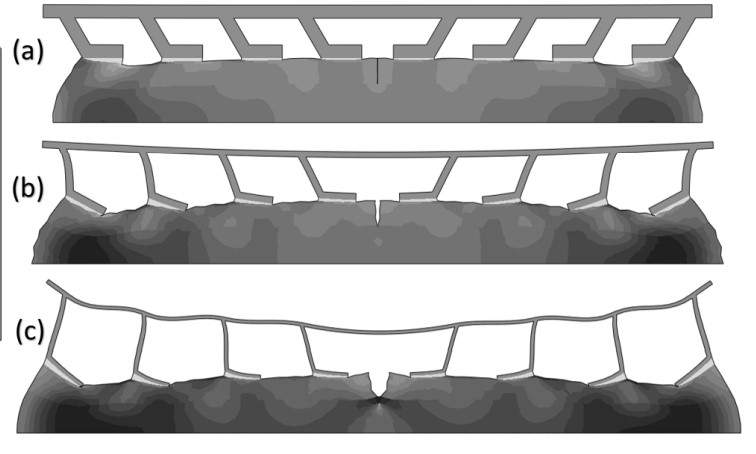
This is important because it means this method can be adapted to match the type of wound it is addressing. For a small cut a small adhesive with few legs can be used whereas, for a more serious wound, a larger adhesive layer with more, thicker legs will be used. This method also allows for air circulation allowing oxygen to reach to wound which promotes healing better than traditional methods. Using a gecko adhesive also minimizes wound irritation which can be a problem, especially for stitches and sutures which often cause irritation and even infection. Finally, this dry adhesive surface is biocompatible and can be made biodegradable. This means they will not react negatively with the skin and can safely dissolve in the body. This makes it a very desirable alternative to sutures which must be removed after insertion causing further wound irritation and requiring another visit to the doctor.
So while it may take a few years still don’t be surprised if you see dry adhesives for wound closings popping up on shelves; and when you see them know that they were inspired by the gecko. If you would like to learn more keep reading here.
You’re One Tough Nut To Crack!
On April 13, 2022, a video uploaded to YouTube titled The End broke the internet. A former Blue Sky Studios Employee, who over the years helped animate the Ice Age movie franchise, posted an unreleased short scene that depicted Scrat, the crazed squirrel from the series, finally catching and eating the acorn he spent more than a decade fighting and almost perishing over.
Continue reading “You’re One Tough Nut To Crack!”Avoiding Cat-astrophe: How do Cats Land their Crazy Jumps?
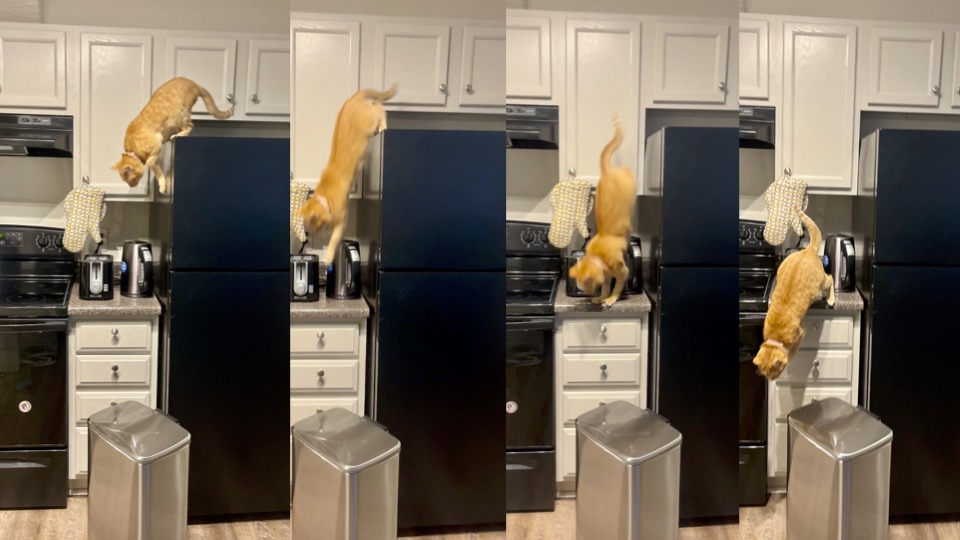
Cats always land on their feet, or so the saying goes. Every cat owner has witnessed their feline make death defying jumps and walk away like it’s no big deal. 90% of cats can actually survive falling off of a high rise building. But how do they do it? How do cats absorb the impact of their leaps without sustaining injuries?
Continue reading “Avoiding Cat-astrophe: How do Cats Land their Crazy Jumps?”A Sticky Situation: The Forest’s Tree-Climbing Superhero
As a child, did you ever watch with awe as Spider-Man climbed lofty buildings in New York City? This super-power has captivated audiences for decades because it seems impossible that a tiny fingertip could provide such great strength. However, the powerful and sticky toes of the tree frog bring this super-power to reality. Their toes have round pads that can cling to surfaces, both wet and dry, due to biomechanical forces. What causes their toes to be so sticky?
Read more: A Sticky Situation: The Forest’s Tree-Climbing Superhero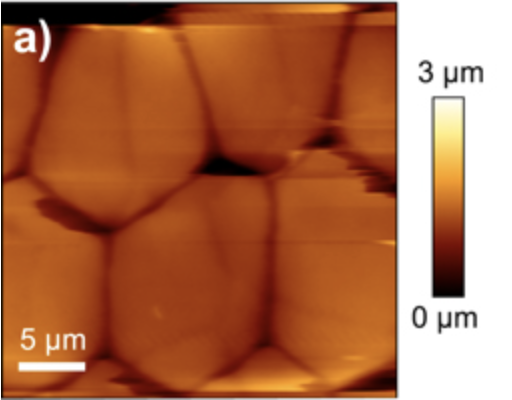
The round toe pads of the tree frog are composed of four layers of surface cells known as epithelial cells. Epithelial cells line all surfaces of the body, including the external surfaces and internal cavities of the body, such as the inner surfaces of organs. The epithelial cells of the toe pad are shaped like hexagons and columnar. Columnar cells have a greater height than width and resemble small pillars. These microscopic pillars are separated from each other by channels filled with mucous. This unique structure creates a phenomenon known as wet adhesion.
The word “adhesion” likely prompts thoughts of everyday adhesives like glue and tape. But, what is wet adhesion? The molecules in liquids are attracted to each other and to the surface surrounding the liquid. In a small container, these attractions cause what are known as capillary forces. When a straw is placed in water, liquid climbs the side of the straw due to these forces. Wet adhesion is the attachment of two materials due to the presence of a liquid with capillary forces. A good example of wet adhesion is when a piece of plastic that is wet gets stuck to a glass table.
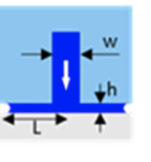
In the toe pads, the mucous secreted into pillar channels creates a layer of liquid between the pad and the external surface, which encourages capillary forces. The liquid layer has also been found to encourage viscous forces. Viscous forces are caused by the attraction between liquid molecules. The attractive forces resist the horizontal movement of liquid molecules when a force is applied tangent to the liquid’s surface. Capillary and viscous forces allow tree frogs to adhere to surfaces at steep angles without sliding off.
Recent research has also shown that frictional forces play a role in toe pad adhesion. The stiffness of the surface of toe pads is not uniform. The polygonal epithelial cells at the surface of the pad have a higher stiffness than the material below. The flexibility of the material below the surface allows for better contour of the pad to a surface. The enhanced interaction with the surface imperfections causes frictional forces to resist sliding and encourage adhesion.
The adhesive toe pads of tree frogs have inspired several engineering applications, including wet adhesive materials. Scientists are pursuing the fabrication of artificial materials that can mimic the characteristic micropillars of tree frog epithelial cells. For example, typical surgical tools, such as forceps, may struggle to effectively grasp softer tissues or increase the risk of tissue damage. Wet adhesive surgical graspers may provide a less abrasive method of holding soft tissues throughout a procedure. Tree frog-inspired wet adhesives may also be used to create sensors and monitors that can easily adhere to a patient’s skin. The study of wet adhesives has the potential to greatly benefit the medical field.
Pacific Rim In Real Life?
How Close are we to a Pacific Rim Reality?
Remember those giant hybrid kaiju-fighting robots from Pacific Rim where the brain of a kaiju (strange beast in Japanese) has successfully infected the mechanical brain of the robots and turned human’s greatest defense against them ? Well, it turns out, the boundary between science fiction and reality isn’t as far as we thought. A researched field “Necrobotics” has taken the world by storm and it is so new that Google is still highlighting “Necrobotics” as red. Imagine a world where nature’s most complex design is integrated into human’s innovation, leading to the most incredible biohybrid systems. If you are drawn the future application of this field or the potential harmony between biology and robotics, you’re in for a treat. In this blog post, we’ll be exploring the existing researches within Necrobotics and the future outlook on this unique field.
Necrobotics, a term derived from “Latinized form of Greek nekros” (relating to death ) and “robotics,” may sound a tad bit eerie, but it’s far from sinister. In fact, it’s all about bringing life to machines. The heart of the research is focused on producing biohybrid system that utilizes the intricate abilities of a living organism while combining with the precision and flawless decision making skills of a robot. Similar to our natural world, it draws inspiration from our environment such as the symbiotic relationship of Bees feeding on a flower’s nectar while carrying its pollen from plant to plant.
So, why should you be interested in this intersection of biology and technology? The applications are nothing short of astounding. One day, we will have biohybrid robots aiding in disaster relief events, enhancing our healthcare capabilities and assisting us in answering humankind most complex questions. These robots are able to mimic natural organism abilities, making them more adaptable, versatile, and resilient than conventional robots. From robotic limbs that respond to neural signals in the body to machines that slither like snakes, Necrobotics are in prime position to push humankind to the next level.
Scientists and engineers have developed a variety of technology by studying organisms that have evolved over millennia of evolution. These technology include surface wettability modification based on lotus leaves and Namib beetles, adhesion mechanisms that mimic gecko toes, and even sensing for smart materials by imitating the color-changing chameleon and the humidity-sensitive pine cone. In order to inform the design of robots and actuators, researchers have also taken inspiration from the locomotion of aquatic and terrestrial animals, such as starfish, jellyfish, and cephalopod. Here is a famous example of dead spider corpse used as a mechanical claw.
In conclusion, these scientific topics may have been initially perceived as science fiction but it has quickly garnered attention and are becoming a crucial step for mankind to take. Future discoveries in this field will have the potential to redefine countless industries while acknowledge nature’s design. So if you’ve ever imagined a time where science and nature coexist, now is the perfect time to get excited about necroboticsᅳthe future is here, and it’s amazing.
Read more: Pacific Rim In Real Life?Superhum(ant) Strength
Have you ever been in the gym and wished that you could lift more? Maybe the solution is hidden underneath the anthill in your backyard. Ant’s are fascinating creatures with remarkable biomechanical properties. Their complex anatomy lends to one of the anomalies in strength of the natural world.
Ant jaws and neck structure allows them to carry weights well over 5,000 times their own weight. For comparison, that would be a 180 lb. man being able to lift 2 Statues of Libertys stacked on each other with his mouth and neck. This incredible feat of strength has been the study of many biologists, because if able to harness this ratio of power, the world would change.
The strength of ants come from the construction of their neck and mandible movements. The geometry of their bodies have been studied by Anderson, Rivera, and Suarez. Their study focused around the geometries of ant’s bodies, especially around the neck area and their center of mass. As seen below in Figure 1, calculations can be made to find the center of mass with variations on species.
From these equations, scientists can understand the positions, proportions, and masses that the ants need in order to create the center of mass needed to hoist large masses over their heads.
Another approach to understanding how ants can lift weights so much heavier than themselves is understanding the biological construction of their necks. The way that Nguyen, Lilly, and Castro found the geometry of ant necks was by using various computer based techniques such as computed tomography and other forms of modeling based off of mechanical data. An example of a computer model based on mechanical data can be seen below in figure 2.
An example of the mechanical testing that Nguyen, Lilly, and Castro conducted involved creating a custom made centrifuge where ants were attached to the edges of the centrifuge by their jaws. By spinning the centrifuge around, the ants are subject to the centripetal force away from their jaws, imitating the force of an ant pulling something with its jaw. By finding the deformation in the jaw, which is the jaw changing it’s geometry due to force being applied, scientists were able to find the stiffness of the jaw and the resistance to deformation (modulus of elasticity). A visual of the experimental schematic can be seen in figure 3.
If able to harness the mechanical advantage that worker ants possess, the applications would be endless. Ranging from construction, to creating medical devices, and many other industries, being able to lift massive loads with minimal equipment would prove useful for the entire world. An example would be a small forklift being able to lift an aircraft carrier just be proportion of strength to weight that mimics an ant. The ongoing research looks promising, and we can only hope we can mimic the strength of the tiny insects we see everyday.
